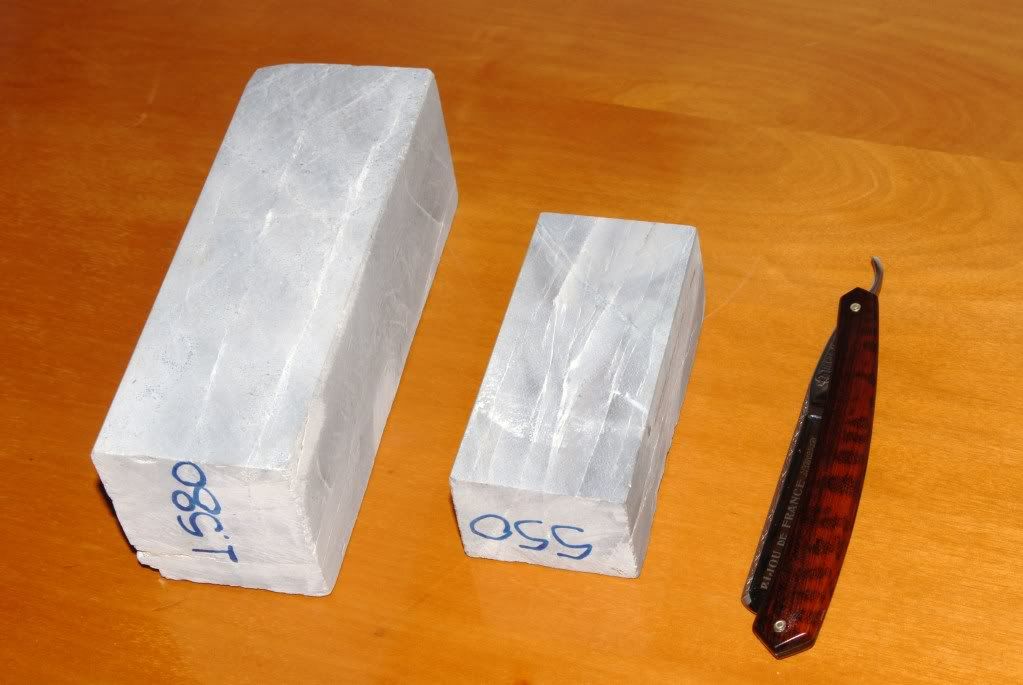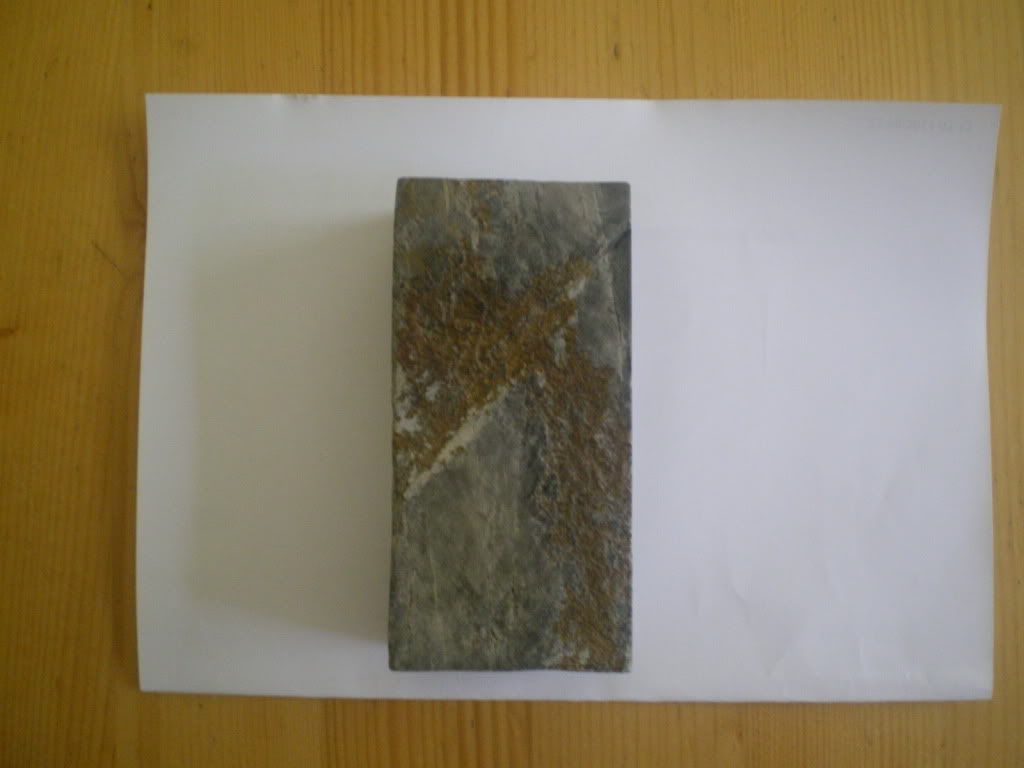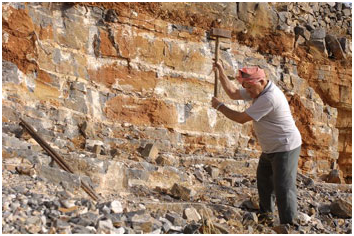 |
| Picture taken from www.coticule.be |
Eloudas sharpening stone is famous the world over for its unique capacity to impart an extremely fine finish to a cutting edge. No other oilstone can approach the sharpening characteristics of this beautiful creation of nature. Elouda Stone is geologically classified as pyritolithos. Pyritolithoi are very hard, fine-grained siliceous rock, probably of sedimentary origin. They are nearly pure Silica and can be many times harder than marble.
The whetstone is a kind of fine emery, composed of layers of sillicic sedimentary substances created by micro-organisms. The sharpeners, used for the grind of different metallic tools, are extracted from regular layers of whetstones usually white, which exist between other rocks of different structure.
The whetstone is a typical product of Elounda which started to be extracted from the ancient times and continues to be extracted in our days. This abrasive stone, produced on the high grounds and the slopes of Michaela, Damianos, Vihala, Karfi, Leskes and Baloma mountains, is unique and though abrasive stones are extracted also in other parts of the planet (as in California-USA) no other has the form of Elounda’s whetstone. The visitor can see on the slopes and on the high grounds of these mountains the rubbles, the pits and the quarries that have been opened.
Historical reports to the whetstones of Elounda begun from Homer (Iliad, raps. B, verse 649: cited as “Halkodaman akonan”) and they continued to exist up to the later Ottoman domination in the sightseers’ transcripts. In these documents the whetstones are presented, depending on the time period, as "Naxia stone" (Naxos was a city on the top of Oxa mountain), or as "Turkish Stone" or even as "stone of the East".
 |
| A pic of the back side. |
At this moment Elounda produces 150 tons of whetstones whereof approximately 50 tons are exported to various countries. The market price of the treated whetstones is approximately one Euro per kilo. However the fact that the young people are interested in other professions mainly tourist, the metier of grinder inclines to disappear.
During the last years the Development Company of Elounda (K.EP.AN.EL) labours for the creation of a Salt and Whetstone Museum though many administrative constraints have been presented for its construction.
During the last years the Development Company of Elounda (K.EP.AN.EL) labours for the creation of a Salt and Whetstone Museum though many administrative constraints have been presented for its construction.
 |
| Quarry (pic taken from, randolphhistory.wordpress.com). |
Bart Torfs (Belgium):
Mineralogy.
The Cretan rock appears to be some kind of Novaculite. Novaculite is a sedimentary rock, formed during the Devonian era, composed mostly of microcrystalline quartz and is basically a recrystallized variety of chert. The various incarnations of Quartz is a complex matter. In a simplified nutshell, we can say that quartz occurs in macrocrystaline, microcrystaline and cryptocrystaline forms. Macrocrystaline grains are too coarse for sharpening purposes and therefore detrimental to the edge. Quartz inclusions of this kind are to be avoided.
Cryptocrystaline quartz forms a fibrous structure without any significant grains. The finest translucent Arkansas Novaculites are a well known example. They are as extremely fine-cutting as they are slow.
Microcrystaline quartz forms a fine granular structure. Fast-cutting oilstones generally are a mixture of microcrystaline and cryptocrystaline quarts. The former accounts for grains and the latter for randomly oriented fibers. Both add to the abrasive properties, though in distinct ways. Hardness approximates 7 Mohs, which is sufficient for sharpening hardened steel. The size of the grains and fibers defines he coarseness/fineness of an oilstone, and plays a key role in the abrasive potential (read: speed).
Emmanuel Giannoulakis (Greece):
I have done some more french google search and found some documents. In the beginning of the 19th century there seem to be a distinction between pierre du Levant, pierre de Lorraine and pierre d'Amérique (Arkansas stone?). The later arrived in France in the first part of the 19th. La pierre du Levant was carried to Marseilles from the east. According to a source, this stone came from Candie (Heraklion) and was put in olive oil for 4 or 5 monthes to harden it.
Candia ,Heraklion is same.Heraklion is the curent name of the Crete capital. Candia is an ancient Venetian name.Elounda where is the mine located in the larger area of Heraklion like Ol Preu for coticule.
Hi, Dino, This is an informative post.Thank you for presenting the info of Sharpening Stones Elouda.
ReplyDeleteBest Casinos Near Carson, NV - MapyRO
ReplyDeleteWhere to stay near Carson, NV? · 8 hotels near Carson, NV · Carson City Airport Station · Carson City Airport · Carson 공주 출장샵 City Airport Station 여수 출장마사지 · Carson City 경기도 출장마사지 Skyline 영주 출장마사지 Hotel & 당진 출장안마 Casino · Carson